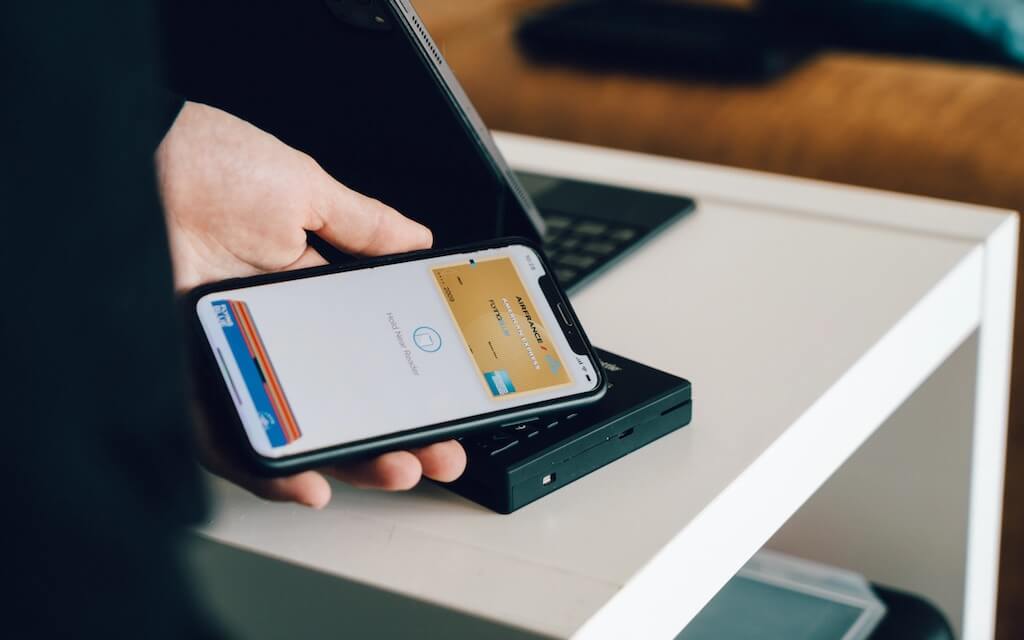Online businesses and digital payments may have existed for decades now, but if you haven’t already realised, the COVID-19 pandemic in early 2020 brought about an exponential adoption of digitisation, e-commerce, and in turn, digital payments.
Can you even imagine life now without food delivery services or digital payments? Most of us might even find ourselves without enough cold-hard cash to pay for our food when we dine out in person because we’ve grown so accustomed to digital payments or e-wallets.
Sure there were businesses that caught on quickly and were well-prepared when the pandemic hit and businesses had to go online, but businesses that were slow to jump on the digitisation bandwagon suddenly found themselves racing to make sense of the digital world. Suddenly they had to quickly understand e-commerce, e-payments, and Smart POS terminals or risk having the lockdowns severely impact their profit margins.
Two years on, because of this wave of businesses that pivoted to digital, the Southeast Asian business landscape is seeing a huge transformation in the way transactions are conducted and how payments are processed. In Singapore alone, even heartland merchants, some 13,000 of them, chose to go digital to strengthen their payment ‘defences’ against the pandemic.
And it’s not just the businesses that are changing their ways. After more than two years of paying via credit card payments and digital wallets in the thick of the pandemic, most consumers in Thailand, Singapore, and Malaysia (61%) agree that real-time digital payment schemes are now the way to go, over digital wallets and credit cards, aside from the regular payment mode of cash.
Growth of the SEA Digital Economy
Even before all of this, the digital economy in Southeast Asia was already poised to grow rapidly as the Internet and mobile devices became more accessible to those in the region. But the pandemic has clearly exacerbated this, with some 60 million Southeast Asians becoming digital consumers during this time, bringing the total number of digital consumers across Indonesia, Malaysia, the Philippines, Singapore, Thailand, and Vietnam, to a staggering 350 million.
If we take a step back, you can see why Southeast Asia’s digital economy is growing the way it is. Just imagine if every one of those digital consumers makes just a few digital transactions a week across online shopping and food orders. Afterall, it won’t be a stretch to say that some of us make at least 2 to 3 in a week, if not a day. According to Google, the Southeast Asian digital economy is expected to reach $1 trillion by 2030. That’s a lot of online orders and food deliveries!
Over the past few decades, the continent has seen an emerging middle class that now has rising disposable income. With more money to spend, improved mobile logistics, and data connectivity, it really is no surprise that these individuals are spending more time online and, in turn, more money online.
Rise Of Digital Payments
As consumers began spending more money and their lives online, businesses that offer a variety of choices for payment modes are the ones that thrive because consumers enjoy the freedom to pay with their preferred method.
Businesses in the consumer fintech space that were quick to recognise this trend and thus offered options did well, and are expecting to do even better in the coming years. In fact, venture capital transactions in this space had hit $10 billion in the first half of 2021, surpassing 2020’s $8.2 billion within the same time period.
As the world opens up in Phase 3 and consumers like you and I come back into the shops, restaurants, bars, and salons, we’re likely to bring these heightened expectations of digital payments back in person. Why deal with cash and cards, when you can just make fuss-free and quick payments via a credit card or an e-wallet that was already on your phone?
And it’s not just the convenience that is making consumers switch to digital payments. With digital payments, consumers now have the option to split a single payment into instalments particularly for bigger purchases, through Buy Now Pay Later (BNPL) payment services, or to accumulate reward points with their purchases.
Waiting on your paycheck but urgently require a replacement for your expensive-to-replace home appliance, like a fridge? With accessible BNPL services like Atome, an item’s price is split into three payments over three months. Consumers can opt to buy first, and pay the item back in smaller amounts later – which could be a relief for those with unpredictable monthly incomes or those in the gig economy.
BNPL services also work well for consumers who may not have credit cards due to various ineligibility reasons or those who have mistrust in financial institutions – they would still be able to afford higher-priced products and pay it back within a manageable timeframe.
Aside from being able to BNPL, and to enjoy the convenience of digital payments, an overwhelming number of consumers are switching over to digital payments because of the ability to accumulate reward points.
Now, this isn’t anything new really – credit card companies have offered reward points and miles for quite a while. But what mostly attracts consumers to digital payments today, is the ability to stack credit card rewards and merchant rewards.
Brands that choose to offer brand-specific reward schemes and programmes with better rewards only stand to gain from this as the customers would be making a payment anyway.
To get started on this, businesses just need to couple their digital payments with their reward point systems through a Smart POS (a function easily buildable and customisable on Qashier Smart POS terminals), make transactions smoother, build customer loyalty, and in turn, make their customers happier.
Digital Payments As The New Normal
With the rise in digital payments and the growth of the digital economy in the years to come, as a business owner, you shouldn’t wait very much longer to jump onto the digital payments bandwagon if you want a slice of this growing consumer pie.
Yes, I hear you – digitising your business can be challenging especially if the original infrastructure like your POS, inventory, or manpower staffing systems are legacy products that are costly to upgrade or replace. As a business owner, you might also worry that your current staff would need time to learn how to use a new system, which could be difficult to make time for in an already-tight manpower situation.
That’s where an all-in-one Smart POS with an integrated payment system, that is easy to set up and use, comes in. Some of our clients, like specialty coffee bar Geylang Drip City in Singapore, found the setup so seamless, they even did it on their own.
With Qashier, your business can easily accept all types of digital and contactless payments such as PayWave, credit/debit cards, and major e-wallets such as PayLah, Apple Pay, and Grab Pay.
If it isn’t already loud and clear, digital payments are the way to go from here on. Digital payments are expected to account for 91% of transactions within Southeast Asia by 2025. So if you’re a business owner, having a reliable digital payment system or an all-in-one Smart POS is no longer a “good-to-have” but a “must have” to meet the changing consumer expectations sooner, rather than later.
Don’t know where to start? Speak to us to see if Qashier’s Smart POS can meet your business needs. Speak to us to see if Qashier’s Smart POS can meet your business needs. Schedule a meeting with us here, call us at (+65) 3165 0155, WhatsApp (+65) 8882 8912, or email [email protected]/sg.



